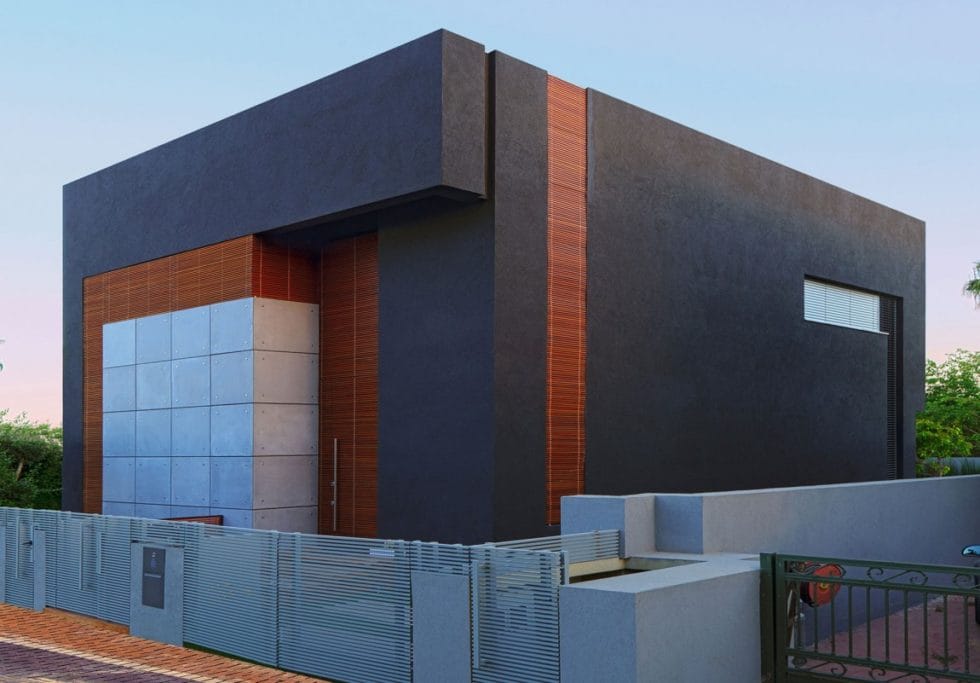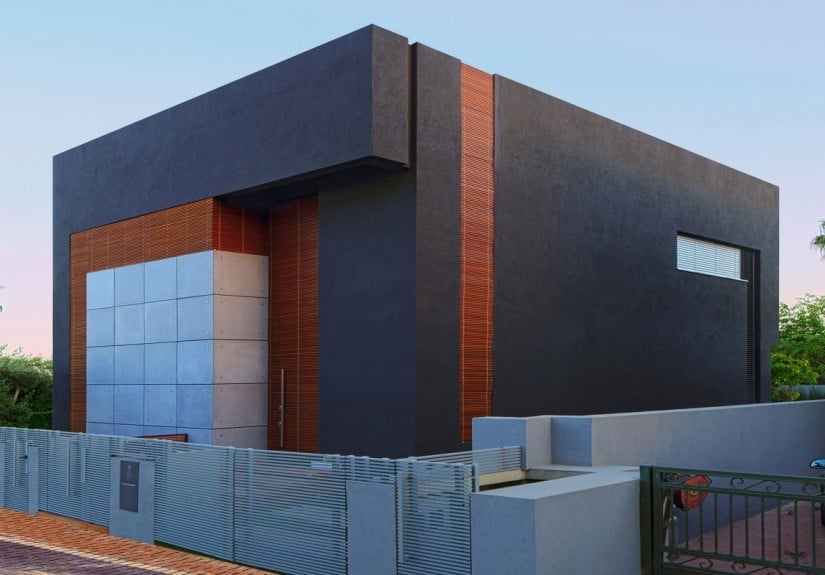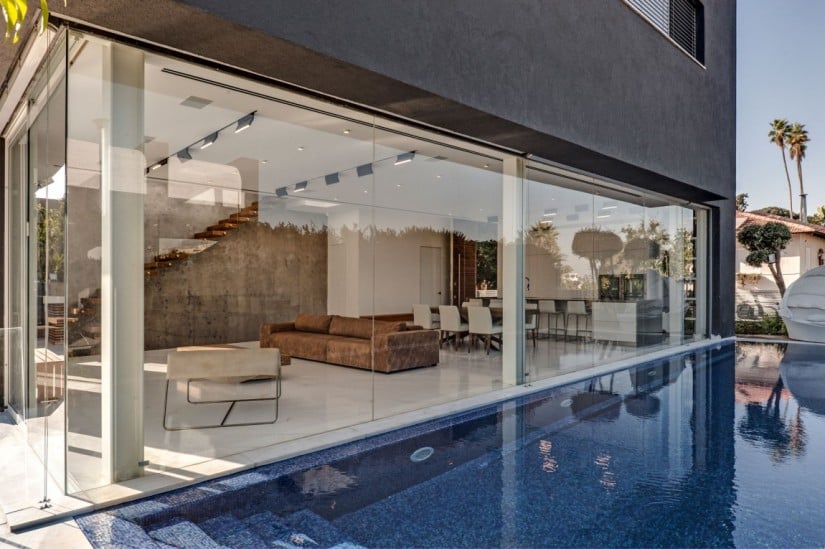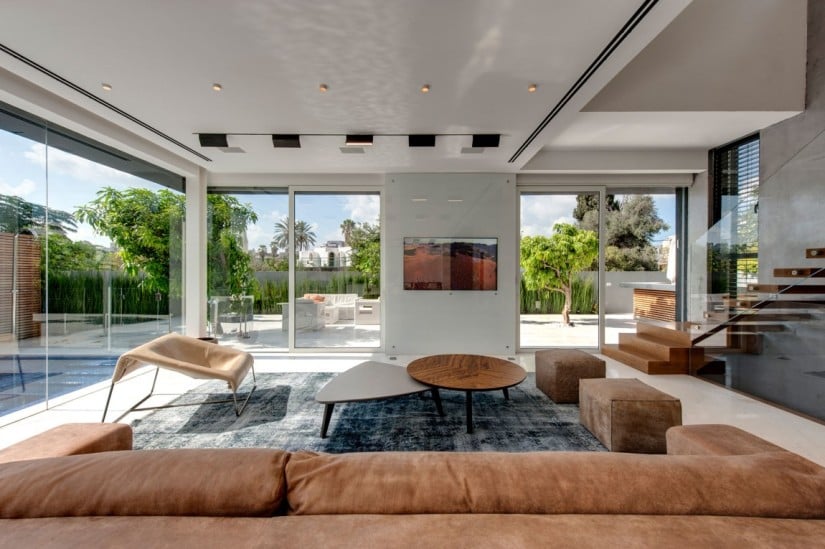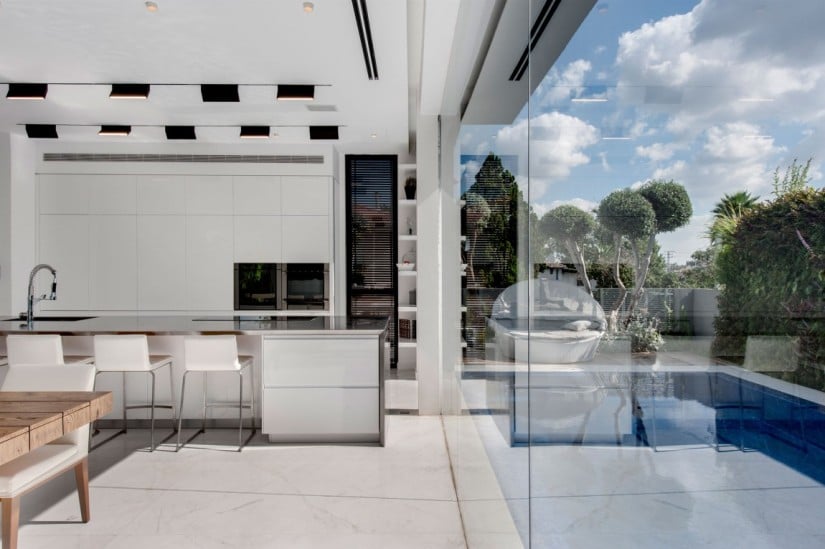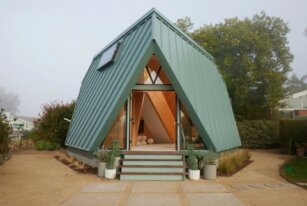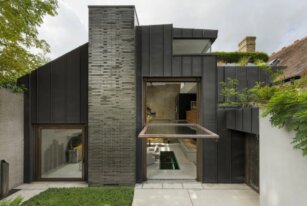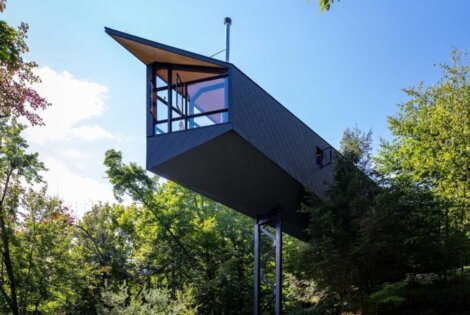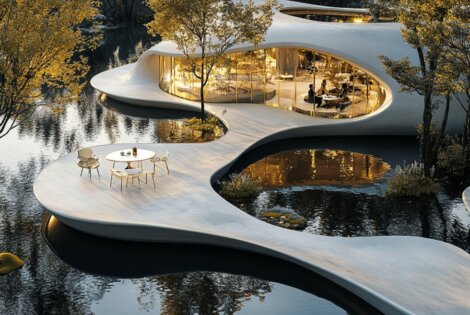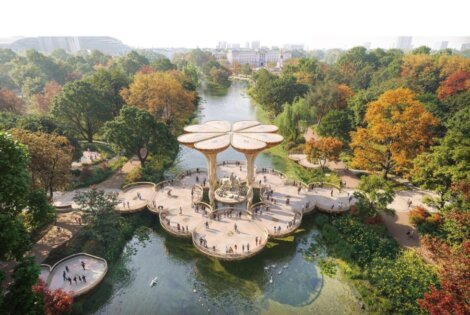Israelevitz Architects were faced with a relatively small plot for this project’s requirements, but they made it work like a dream. The main theme of the Hidden House in Tel Aviv is that of contradictions. To ensure dynamism in a limited space, they played around with opposing concepts, such as sealed and opened, inside and outside, dark and light, small and large.
The architects decided to create maximum transparency on the ground floor, closely linking it to the courtyard and swimming pool. Floor-to-ceiling glazing helps bring the two spaces together, thus facilitating the transition from one to the other.
Not compromising on privacy, the house features an opaque front façade, made of concrete beams and wooden trellis. Strip windows allow light to penetrate the walls, thus eliminating the sense of complete isolation. The exterior is dark and almost austere, but that is just another way of creating visual contrasts, as the inside is white and generously lit.
The socialization area is obviously on the open ground floor, while the upper level is reserved for the private spaces of the house, (the parents’ quarters and a children’s bedroom). Also rather intimate, the basement level holds two rooms for the older children in the family, as well as a perfectly soundproofed home theater.

